Blackcurrant diseases and pests
Currant bush does not seem tender and unprotected. It easily tolerates the cold of winter, temperature changes, waterlogging and drought. However, all this does not remain without consequences. Here is a list of the main problems of this plant, currant diseases in the photo look quite convincing:
- Anthracnose. Signs: small brown spots with tubercles appear on the leaves. They gradually grow, spreading throughout the plant, and the bush dies. Contributes to an increase in the focus of the disease and moisture: rain or fog.
- white spot, septoria. The leaves turn white, and small dark spots, spores of the fungus, appear on them. It happens that on the fruits you can notice signs of this disease. Black currant is exposed more often.
- goblet rust. This disease is characterized by the appearance of yellow-orange pads that spread to the leaves and flowers of the bush. It is believed that black currants are more susceptible to this disease.
- European powdery mildew. A white coating appears on young leaves, like a thin cobweb. It affects mainly red currants.
- Sferoteka (another type of powdery mildew, American). It can affect the entire plant: young leaves and shoots, berries and ovaries. A thin white coating appears, which thickens over time. The leaves are deformed and die.
- Reversion (terry). The plant is completely affected, changes in the shape and color of leaves and flowers are noticeable. The flowers dry up, but do not fall off for a long time. There are no fruits at all. Blackcurrant suffers from this disease mainly.
- striped mosaic. Where the veins pass on the leaf, a duplication of their pattern appears in yellow or orange.
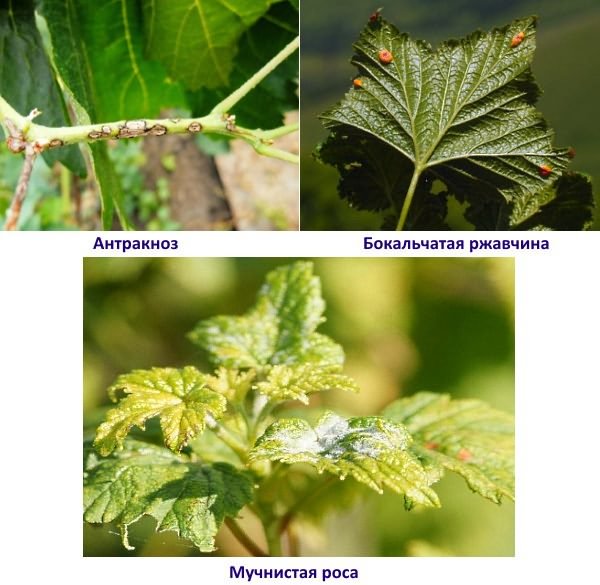
Currants are threatened by both diseases and pests.
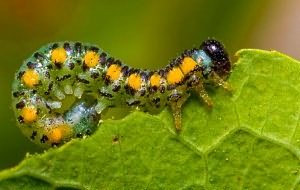 Currant pests:
Currant pests:
- moth, she lays her eggs on the currant, the caterpillars that appear entangle the leaves with cobwebs, feeding on them;
- sawfly, its larvae completely eat the leaves of the plant;
- leaf gall midge, these are mosquitoes, for them the young leaves of the plant are a real delicacy;
- spider mite, so named because it entangles leaves with cobwebs and feeds on their juice;
- goldfish, this is a larva, it feeds on the core of currant stalks;
- kidney tick, it is he who is the carrier of terry, a dangerous currant disease;
- aphid, sucks juices from both young leaves and stems;
- the moth is gluttonous, in its diet there are gooseberry and currant leaves, which it completely eats.
This is not a complete list. It includes only the most common and dangerous diseases and pests. One more conclusion can be drawn, despite the close relationship, black and red currants can have "their" diseases:
Blackcurrant diseases
It is interesting to note that some blackcurrant diseases are similar to those that suffer from grapes and gooseberries. This is powdery mildew, terry, glass rust, septoria. The danger to blackcurrant is represented by the same pests as to gooseberries.
Diseases of red currant
Red currant has a number of advantages over black currant, it is more productive and unpretentious, and its main advantage is that it is resistant to diseases. But, even this does not save her from many of them, including European powdery mildew.
Currant treatment for diseases
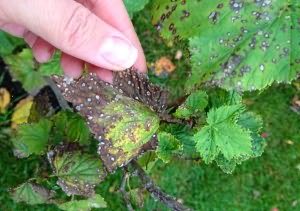 Every gardener needs to carefully examine the plants in order to notice the first signs of any of the likely diseases at an early stage. The leaves of the plant that have wilted and fallen must be collected and burned. Under this condition, you can easily cope with the disease.
Every gardener needs to carefully examine the plants in order to notice the first signs of any of the likely diseases at an early stage. The leaves of the plant that have wilted and fallen must be collected and burned. Under this condition, you can easily cope with the disease.
Currant treatment for diseases begins with the removal of damaged leaves and branches. The next important step is to dig up the soil around the plant's trunk. Further actions will depend on the specific reason why the currant suffers.
- Anthracnose. A currant bush exposed to this disease must be treated with fungicidal agents. Many gardeners use copper sulfate, Bordeaux liquid, colloidal sulfur or phthalan for spraying every 10 days. These drugs are suitable both for preventive purposes and for treatment.
- Septoria. From this disease, spraying with copper sulfate helps, 40 g per 10 liters of water.
- Goblet rust. It is necessary at the time when the leaves bloom, flowering begins, and when the ovaries appear, spray the bush with fungicides, or a 1% solution of Bordeaux mixture.
- Powdery mildew. The bush itself and the soil under it should be treated with nitrofen or a 3% solution of ferrous sulfate. Spray every 10 days.
- Sferoteka. 300 g of iron sulfate in a 10-liter bucket of water, mix and spray the bush. There is another way that works at the very beginning of the disease: 50 g of soda ash + 50 g of soap per 10 liters of water. It is necessary to process a currant bush several times.
- Terry. At an early stage, it is very difficult to determine it. And when it becomes clear what kind of disease the currant bush overcomes, it is already too late. And in order to avoid the spread of the disease to healthy bushes, the diseased plant should be dug up and burned.
- Striped mosaic. Another disease that is almost impossible to treat. Therefore, the plant is uprooted and burned.
Pests. From most insects, spraying the currant bush with insecticides helps. And this is done in several stages. The first - before bud break, the second - after flowering.
Prevention of currant diseases
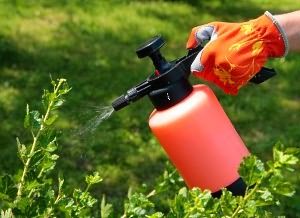 Of course, every gardener understands that preventive measures are always better, they are cheaper, require less time and effort, and also prevent the bush from deforming if the disease progresses, and they do not have a negative impact on productivity. And first of all, this is not the use of any chemical or organic means, but the correct planting, pruning and feeding of currant bushes.
Of course, every gardener understands that preventive measures are always better, they are cheaper, require less time and effort, and also prevent the bush from deforming if the disease progresses, and they do not have a negative impact on productivity. And first of all, this is not the use of any chemical or organic means, but the correct planting, pruning and feeding of currant bushes.
Prevention of currant diseases is a whole range of activities:
- It is necessary to remove parts of the plant damaged by disease or pests in time, and it is better to do this at an early stage, until the entire bush has become infected.
- Correct and timely pruning. Sanitary cleaning of the bush will make sure that the plant does not thicken, so the likelihood of diseases is reduced many times over.
- Moderate watering. A large amount of moisture contributes to the spread of diseases and attracts dangerous insects.
Digging up the earth around the stem of the plant. Thanks to this, those pests that remain in the ground after winter are destroyed. Growing healthy bushes and getting a good result is sometimes the same thing. Therefore, you should always monitor the condition of currant bushes in your area, and, if necessary, help the plant in time.
Video: protecting currants from pests
glav-dacha.ru
Blackcurrant diseases
The most useful berry is black currant. The fruits of this shrub contain many vitamins that everyone needs. The berry helps to strengthen the immune system, has anti-inflammatory properties, reduces the effects of radiation, promotes the removal of toxins and helps the body fight many diseases.
Most summer residents have several blackcurrant bushes on their plot. This is not only tasty, but also a very healthy berry. Sometimes blackcurrant diseases overshadow the joy of enjoying the harvest.
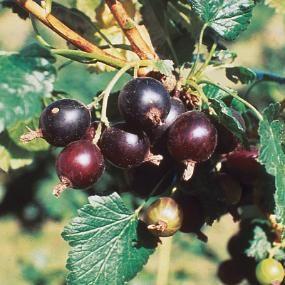
It is very important when growing black currants to know that the plant develops well and bears fruit abundantly only with suitable care. Currant bushes are very often exposed to diseases and you need to know how to help them in order to protect them from death. For every disease, there are remedies to combat them.
Terry currant: signs and prevention of the disease
Terry currant. A dangerous disease caused by a virus that can lead to infertility of bushes. There is a change in the leaves, they lengthen, become three-lobed with pointed teeth, their asymmetry may appear. The number of veins decreases, the flowers become narrow-petaled. The bush is showing signs of growth. The plant does not bear fruit and loses its characteristic smell, and the leaves sometimes turn purple.
Terry is transferred by a bud mite from sick to healthy bushes. Sick bushes must be destroyed, since pruning in this case will not help.
To prevent disease, it is necessary to choose proven healthy material for planting. After picking the berries, you need to treat the bushes with the preparation "karbos" or colloidal sulfur, in addition, apply potassium-phosphorus fertilizers, they increase the plant's resistance to terry. Increasing the dose of nitrogen-containing fertilizers has the opposite effect and can lead to currant doubleness.
How does American powdery mildew manifest?
This disease is caused by a fungus that overwinters on affected shoots and fallen fruits and leaves.
The disease usually appears in early or mid-summer. The disease can affect fruits and shoots. First, a white coating forms. Then the mycelium becomes denser and turns brown. Young shoots and leaves are involved in the process. The growth of the tops of the leaves stops, the shoots grow poorly and die off, the remaining fruits become inedible. With a strong spread of the disease in a couple of years, the plants die.
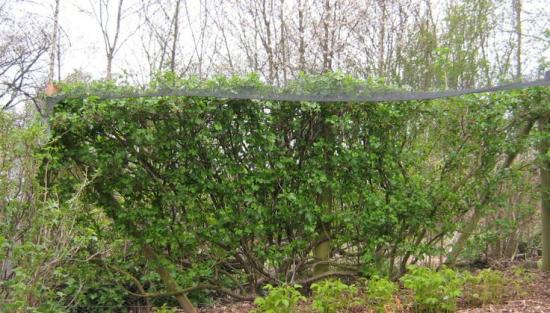
Thickened plantings, location in shaded areas and high soil moisture favor the development of the disease. Dry and warm weather, on the other hand, inhibits the development of American powdery mildew.
American powdery mildew and disease control
To reduce the sources of infection, it is necessary to cut out the affected shoots and collect diseased berries with their subsequent destruction. To destroy the infection at the first sign of damage, the bushes and the soil under them are sprayed. Nitrafen, copper sulfate or soda ash are used to fight.
The treatment should be carried out with one of the preparations and repeated after 10 days two to three times. Two weeks before harvesting, you need to stop treating the bushes with drugs. Before flowering and after picking berries, it is also good to spray currants with solutions of foundationol, sulfur and Topaz.
The bacterial method also gives results - spraying with infusion of rotted hay, peat, forest floor or mullein. Treatment with infusions is carried out three times: before flowering, after it and before the leaves fall. This is done in cloudy weather or in the evening.
Anthracnose
The disease is also caused by a fungus. Symptoms of the disease appear in May. Leaves, shoots, petioles and berries are affected. First, yellowish-green small spots appear, and then brown spots. With severe damage, the spots can merge, the edges of the leaves curl and fall off. The fungus overwinters in fallen leaves.
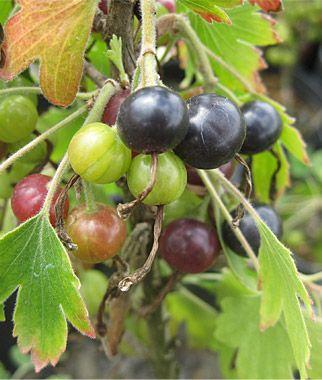
The pathogen is spread by wind or raindrops. In warm and humid summers, this disease appears especially often. Most often, old weakened bushes and early ripening varieties are affected.
Measures to combat the causative agent of anthracnose
The fight is to use copper sulfate, nitrafen. Fallen leaves are collected and burned. The soil is dug up. In early spring, before bud break, currants are sprayed with solutions of iron or copper sulfate. Immediately after the leaves bloom, before flowering, spraying is carried out with Bordeaux liquid, immediately after flowering again.
With the mass spread of the disease, spraying should be carried out up to three more times: a couple of weeks after flowering, and then after harvesting the fruits after the same time.
Blackcurrant diseases can be prevented by choosing healthy bushes and tilling the soil and bushes in time and watering correctly and on time.
OgorodSadovod.com
Diseases and pests of blackcurrant
If you want to know what blackcurrant pests affect this shrub, then you can list them for a long time. The main thing is to know the basic preventive measures that will save you from many troubles associated with diseases.
Currant and its cultivation
So, the cultivation of currants and its preparation for the summer season begins in early spring. The shrub will benefit from a hot shower. But you need to arrange it only when the buds swell, and the first leaves do not appear.
Water should be heated to 70 degrees. She needs to pour bushes from a watering can. This procedure contributes to the fact that currant pests, which are just starting to show their first activity, immediately die. In addition, a hot shower has a positive effect on the further growth of the shrub.
Before you grow currants, you need to deal with its most dangerous pests. For example, blackcurrant is affected by the blackcurrant fruit sawfly, due to which the berries acquire a ribbed shape. To combat it, you need to constantly destroy infected berries. After flowering, the shrub is sprayed.
If pests and diseases are not so well known, then everyone needs to know the beneficial properties of currants. So, the use of blackcurrant berries can be an excellent prevention of atherosclerosis. They also help treat diseases of the liver, kidneys and respiratory tract.
Therefore, be sure to include white, red and black currant berries in your diet, and harvest its leaves for the winter to prepare decoctions.
OgorodSadovod.com
How to protect bushes from pests of blackcurrant, red and white
Pests of black, red, white currants and agricultural technology - what connects them
As folk wisdom says, the disease is easy to prevent, but difficult to cure. This statement also applies to harmful insects, whose invasions of bushes lead to very deplorable consequences.
In well-groomed gardens, where the rules of agricultural technology are observed, not very favorable conditions are created for the reproduction of pests. These techniques are quite simple and consist in caring for the berry bushes. First of all, in early spring, all affected shoots are cut out at the soil level and burned along with the fallen leaves that have remained since autumn.
Feeding, loosening the soil between the rows, around the plant itself also help maintain the health of the garden. Autumn digging of the earth causes significant damage to the number of wintering pupae, spores, etc. In addition, mulching the soil with a thick layer in early spring leads to the death of larvae of stem and leaf currant gall midges.
At the first detection of uninvited guests, you should not immediately apply the means of protection of the chemical industry. With a small number of pests, it is quite possible to collect them by hand or gently chuck them on a sheet spread under a bush, or you can also in an open inverted umbrella. For spraying, decoctions and infusions of plants with a specific odor and insecticidal properties are recommended (they are used no more than once a week), and it is better to resort to chemical preparations in case of urgent need.
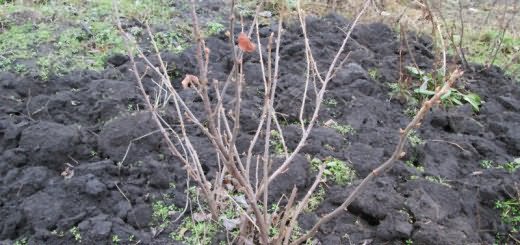
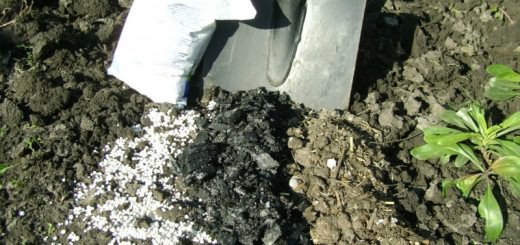
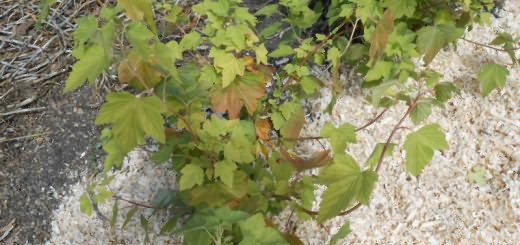
Fighting aphids on currants
These tiny, sucking insects are very difficult to get rid of. They multiply at an incredible rate, damaging the blossoming leaves and tops of the shoots. Ants help the aphids to settle in the garden, they take care of them and hide them in their nests for the winter, and again carry them along the stems in the spring. The first measures for its destruction must be carried out even on the green cone of the kidneys. If you have an aphid on a currant, we will now tell you how to deal with it.
Natural Ways to Fight:
- significantly reducing the aphid population will help to regularly wash it off the bushes with a strong stream of water or wetting the leaves with soapy water (250 g of laundry soap is diluted in a bucket of warm water);
- spraying with infusions of garlic, onion husks (a bucket is filled up to half with husks, filled with water to the top and left for 5 days), tobacco, mustard (100 g per bucket), needles, tops of tomatoes or potatoes (4 kg of green stems or needles) is also depressing. insist 3.5 hours in a bucket of water). A decoction of bitter wormwood, hot pepper has the same effect (half a bucket of greens is poured with water to the top, infused for about a day, then boiled for half an hour and diluted 1: 1 with clean water before use);
- help homeopathic remedies Healthy garden, Ecoberin, as well as bacterial preparations Bitoxibacillin, Batsikol.
Scientific ways to fight:
- treatment of affected bushes with "chemistry", for example, Aktellik, Fufanon, Karate, Aktara. Just remember that you need to have time to spray a month before picking berries.
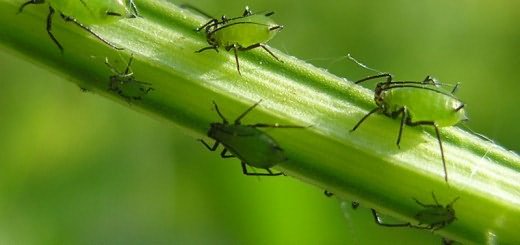
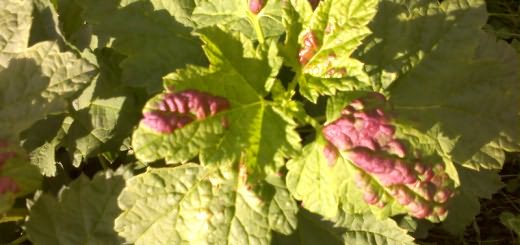
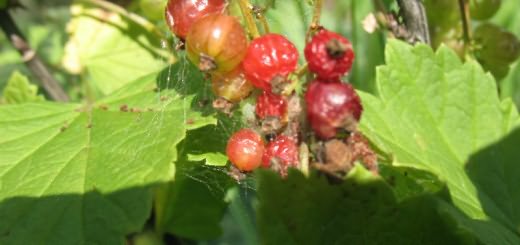
Bud mite on currant
The first sign that you have a bud mite in your garden These are abnormally swollen kidneys. In the spring, they are not able to open up and gradually die off, which affects the amount of the crop. In one kidney can be up to a thousand individuals. Having got out of it in the spring, they settle in the surrounding area with the help of insects, birds or wind.
Another sign of uninvited guests is the changed shape and color of the apical leaves, which also lighten and become deformed, leathery. Over the summer, ticks give 3-4 generations. In addition, they are carriers of such a viral disease as terry. Therefore, throughout the growing season, you need to carefully monitor the appearance of enlarged buds and pluck them when they appear. It is best to deal with the mite in the period from bud swelling to the end of flowering.
Ways to fight:
- from folk remedies, spraying with infusions of tobacco, garlic (200 g of crushed heads are placed in a bucket of water, immediately stirred, filtered and applied), dandelion (400 g of greens or 300 g of rhizomes are poured with a bucket of water, insisted for 3 hours, filtered), walnut (3 kg of dry leaves per bucket of water, insist for about a day);
- for chemical protection, a suspension of colloidal sulfur is used (100 g per ten liters of water) or Karbofos(75 gr per bucket). Apply at least two times.
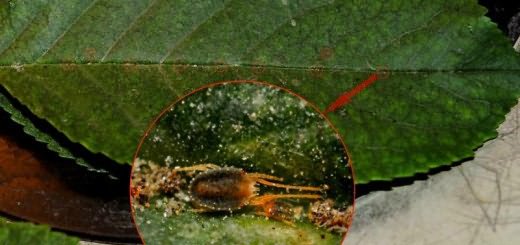
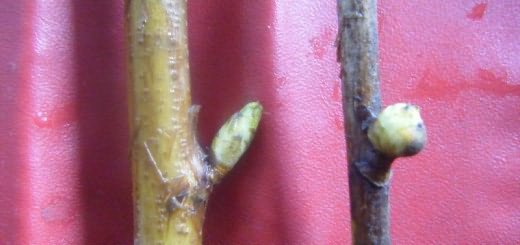
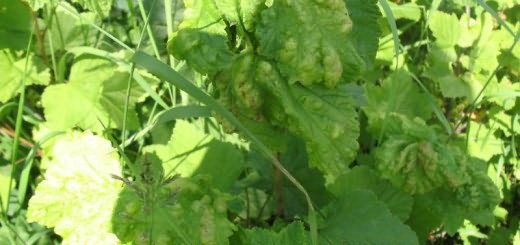
Spider mite on currant
The spider mite is the scourge of blackcurrant, causing the greatest harm in hot, rainless weather. The presence of a sucking pest begins to appear already before flowering: bright dots are visible on the leaf blade from above. The mite on the currant lives on the underside of mature leaves, covers them with small cobwebs, as a result of which they turn yellow and fall off by mid-July.
To get rid of the pest, weeds are destroyed in the fall, the soil is dug up, the remains of dry leaves are carefully collected in the spring and the bush is mulched until the end of flowering. The mass development of insects falls on the last month of summer. Affected plants winter poorly, and also lose high yields.
Ways to fight:
- for preventive purposes, the bushes are treated with infusion of tobacco, onion peel, and a decoction of wormwood before flowering (the recipes are given above). Sprayed several times at weekly intervals until the need is gone;
- another wonderful ecological remedy - a biological product Fitoverm. It is used in a proportion of 2 ml per liter jar of water;
- after harvesting the berries, currants can be sprayed Karbofos(60 gr per bucket of water). To process the plant on unblown buds, or after flowering, prepare a solution Karbofos other concentration (30 gr per bucket).
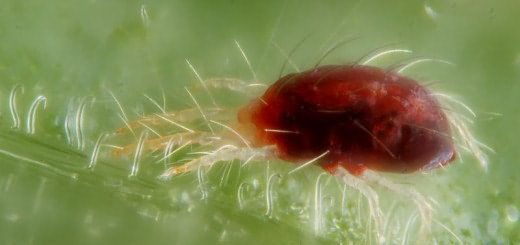
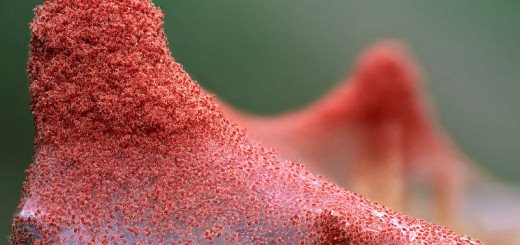
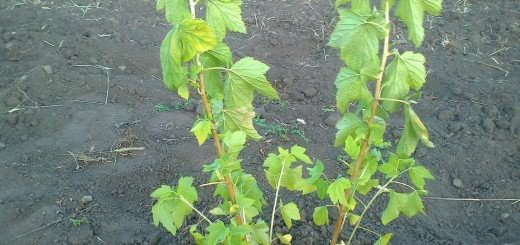
grounde.ru
Control of pests and diseases of currant
|
Plant protection and control of currant pests and diseases includes a whole range of measures, from prevention to chemical treatment. But among them there are fundamental ones that every gardener should know. 1. The acquisition of modern varieties that are resistant to the most dangerous diseases and pests will save both your strength and your harvest. 2. Protecting against pests, the bushes should be sprayed with insecticides, and against diseases - with fungicides. 3. You need to spray the bushes in dry weather, choosing morning or evening hours for this. Do not process plants after heavy dew, before or after rain. 4. When working with chemicals, be sure to use personal protective equipment (respirator, rubber gloves and boots, gown or apron). In the absence of a respirator, you can cover your face with a gauze bandage, and protect your eyes with goggles. 5. If the term and number of treatments with chemicals are strictly limited, then the bushes can be sprayed with decoctions and infusions 4-5 times per season. The last treatment should be carried out no later than 20 days before harvest. Currant bud mite.Currant bud mite is one of the most common and dangerous pests. In spring, the buds populated by it greatly increase in size, becoming up to 1 cm in diameter and resembling small cabbages in shape. The exodus of ticks from them begins before flowering and lasts a little more than a month, but the bulk crawls out already during the first 3 weeks. During this period, pests are most vulnerable and easy to get rid of. If they are not stopped, they will spread along the shoots and populate the young buds. Mass infection of currants with a kidney mite leads to the death of the kidneys and a shortage of crops. In addition, this pest is a carrier of a dangerous viral disease - terry, which leads to infertility of flowers. Means and methods of dealing with currant bud mitesIn early spring (before flowering), swollen, tick-infested buds are removed. With a strong infection, branches are cut and even bushes are uprooted.. At the beginning of the nomination of inflorescences (the period of mass release of mites from the kidneys), the bushes are sprayed with 0.2% acarin, or 0.1% fufanon, or 0.04% phytoverm (the latter drug is used at air temperatures above 15 ° C ), infusions of tobacco or onion peel. Gooseberry shoot aphidDamages leaves on young shoots. They bend down, the shoots are bent, grow poorly or completely stop growing. On their tops, clumps of twisted leaves with colonies of aphids are formed. Means and methods of dealing with aphids on currantsIn order to destroy the overwintered aphid eggs, in the spring (before the buds swell), the bushes, starting from the top, are abundantly watered with hot water (up to 70 ° C). During bud break and the appearance of the first leaves, the bushes are sprayed with 0.1% Fufanon or Inta-C-M, a spark (1 tablet per 10 liters of water). After flowering, they are treated with infusions of shag, onion peel, dandelion, potato tops. Currant (red-gall) aphidCurrant (red-gall) aphid is a very common and unpleasant pest. Redcurrant damages young leaves. It settles on the underside of the leaf blade and feeds on its juice until mid-summer. Dark red or red-yellow swellings (galls) appear on damaged leaves. With a strong invasion of aphids, the leaves dry up and fall off, the growth of shoots slows down, the filling of berries worsens and the yield of the bush decreases. Means and methods of struggle. The same as with gooseberry aphids. gooseberry mothGooseberry moth is one of the most dangerous pests of currants. At the beginning of flowering, bright green caterpillars penetrate the ovaries, eat away the pulp and seeds in them. Damaged berries are stained ahead of time, dry out and, entangled in cobwebs, hang in a lump on the branches. Means and methods of dealing with gooseberry mothBefore flowering, the soil under the bushes is mulched with peat or compost (mulch height 6-8 cm). At the beginning of flowering, damaged berries are collected and destroyed while caterpillars are in them. Before flowering and immediately after it, they are sprayed with biological products - 1% bitoxibacillin or 0.3% lepidocide. During the ripening period, the berries are treated with infusion of wood ash (a third of a bucket of ash is poured into 10 liters of water and insisted for a day) or mustard infusion (100 g of powder is poured with a bucket of boiling water, insisted for 2 days, another bucket of water is added before processing). currant glass jarAt the end of flowering or the beginning of the ripening of berries, glass caterpillars gnaw through the bark and penetrate into the branch, filling its core with a wormhole. This is clearly visible on the cut. Damaged branches wither and dry up. Means and methods of struggle. Damaged branches are cut out in early spring and autumn. During the season, drying and lagging behind in development are removed. They are cut to a healthy part or to the ground, leaving no stumps, and immediately destroyed (burned). AnthracnoseAnthracnose attacks young growing leaves. On both sides of the leaf blade appear small brown spots. With a strong defeat, they merge. Leaves curl up, become as if burned and fall off. In diseased bushes, frost resistance decreases, and in winter they freeze slightly. Means and methods of protection against anthracnoseMeans and methods of protection with anthracnose, before flowering and after harvesting, the bushes and the soil under them are sprayed with 0.4% oxychloride, or 0.2% soon, or ash infusion. In autumn or early spring, foliage is collected around diseased bushes and burned. Doubleness (reversion) of currantTerry (reversion) currant is a dangerous viral disease that leads to infertility of plants. It mainly affects blackcurrant, but in recent years there have been cases of the disease and red. The causative agent of the disease is transmitted by a kidney tick. Very often brought into the garden with infected planting material. Affected plants develop ugly flowers with thread-like, needle-like petals that are purple or green (instead of white) and look like curly (double). The berries are practically not tied. From bush to bush, the disease spreads gradually, over several years. Means and methods of struggleIn order not to bring the terry virus into your garden, seedlings are purchased from reliable nurseries and horticultural firms. Cuttings for propagation are taken only from healthy bushes. Timely carry out the fight against the kidney tick, the main carrier of infection. During the flowering period, the bushes are especially carefully examined. If single double flowers are found, cut off the branches on which they grow. However, this disease is unlikely to stop and you still have to part with the bush. With many double flowers, the plant is immediately uprooted and destroyed (burned). If a 0.01% solution is indicated in the dosage of the drug, then it is necessary to dilute 1 g in 10 liters of water, if 0.1% -10 g and I% -100 g Knowing this, it is easy to calculate the amount of the chemical, recommended for use. For example, to obtain a 0.2% solution, 20 g (10x2) should be used. |




